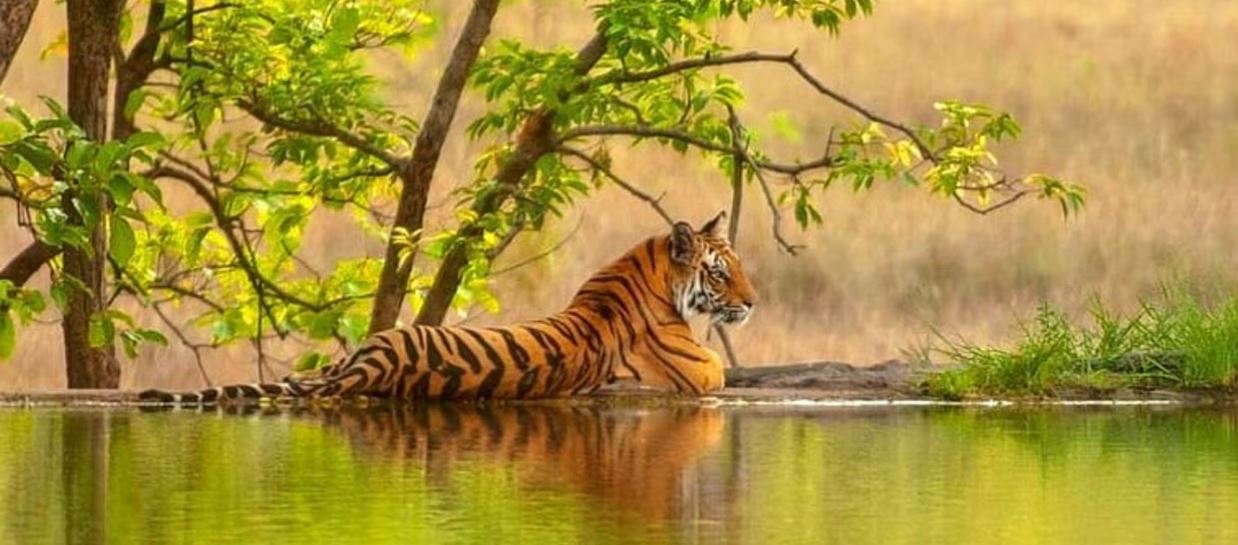Complete Tour Guide to Valmiki National Park, Bihar

Valmiki National Park, located in the state of Bihar, is a hidden gem that encapsulates the pristine beauty of nature. Nestled in the sprawling landscapes of the Himalayan foothills, this park is a sanctuary for wildlife enthusiasts and nature lovers alike. With its rich biodiversity and captivating scenery, Valmiki National Park offers a unique travel experience that is truly one-of-a-kind.
Covering an area of about 880 square kilometers, Valmiki National Park is one of the largest national parks in India. It was established in 1990 with the aim of protecting the endangered species and conserving the natural habitat of the region. The park is named after the sage Valmiki, who wrote the epic Ramayana, and is known for its religious significance as well. One of the main attractions of Valmiki National Park is its diverse range of flora and fauna. The park is home to a variety of wildlife species including tigers, leopards, wild boars, elephants, langurs, and many more. Birdwatchers will be delighted by the park's avian population, with over 240 species of birds recorded here. The park also boasts of several rare and endangered species, making it an important conservation area.
For nature enthusiasts, Valmiki National Park provides ample opportunities to explore its natural wonders. The lush green forests, granite cliffs, and gushing waterfalls create a picturesque backdrop that is a feast for the eyes. The park is also intersected by several rivers, including the Gandak and the Kosi, which add to the beauty and serenity of the surroundings. There are various activities and experiences that visitors can indulge in when visiting Valmiki National Park. Jungle safaris are a popular choice, offering the chance to spot elusive wildlife in their natural habitat. The park authorities conduct guided safari tours, ensuring a safe and informative experience for visitors. Trekking is another exciting activity, with several well-marked trails that lead to breath-taking viewpoints and hidden gems within the park.
Climatic Conditions at Valmiki National park: Temperature: The temperature in Valmiki National Park varies widely throughout the year, ranging from hot summers to chilly winters. Humidity: Humidity levels are typically higher during the monsoon season but decrease during the rest of the year. Rainfall: The park receives moderate to heavy rainfall during the monsoon season, which contributes to the lush greenery of the region. Wind: Winds are generally mild and do not significantly impact the weather conditions at the park.
Best Time to See Valmiki Tiger Reserve: The best time to visit Valmiki National Park is during the winter months, from October to March, when the weather is pleasant, and wildlife sightings are more frequent. However, each season offers a unique experience, so the choice of when to visit depends on personal preferences and interests. Whether you prefer the vibrant greenery of the monsoon season or the comfortable weather of winter, Valmiki National Park offers a captivating experience throughout the year. Make sure to plan your visit according to the season that aligns with your interests and preferences for an unforgettable journey into the heart of Bihar's wilderness.
Wildlife at Valmiki National Park
Valmiki National Park is renowned for its rich biodiversity and diverse wildlife. Here's a glimpse into some of the fascinating species you might encounter during your visit:
• Bengal Tigers: Valmiki National Park is home to a significant population of Bengal tigers, one of the most iconic and majestic big cats in the world. While spotting them requires patience and luck, the park offers opportunities for tiger sightings during safari excursions.
• Leopards: Besides tigers, leopards also inhabit the forests of Valmiki National Park. These elusive predators are skilled climbers and often hunt under the cover of darkness.
• Sloth Bears: Known for their shaggy coats and distinctive markings, sloth bears are another highlight of the park. These omnivores primarily feed on insects, fruits, and vegetation.
• Indian Wild Dogs (Dholes): Dholes, also known as Indian wild dogs, are social predators found in the park's wilderness. They hunt cooperatively in packs and play a crucial role in maintaining the ecosystem's balance.
• Asian Elephants: Valmiki National Park is inhabited by a sizable population of Asian elephants. These gentle giants roam the forests in search of food and water, forming an integral part of the park's ecosystem.
• Sambar Deer: The park is home to sambar deer, one of the largest deer species in India. These herbivores are commonly sighted in the forest clearings and near water sources.
• Spotted Deer (Chital): Spotted deer, also known as chital, are abundant in Valmiki National Park. Their striking coat patterns make them easily recognizable amidst the forest foliage.
• Wild Boars: Wild boars are common sightings in the park, often foraging for roots, tubers, and other vegetation in the forest understory.
Distance from Nearby and Major Cities
• Patna – 222 Kilometres
• Lucknow – 322 Kilometres
• Rohtak – 759 Kilometres
• Delhi – 695 Kilometres
• Chandigarh – 808 Kilometres
• Kolkata – 684 Kilometres
• Mumbai – 1476 Kilometres
• Amritsar – 1015 Kilometres
• Dehradun – 679 Kilometre
• Hyderabad – 1255 Kilometres
• Chennai – 1642 Kilometres
Nearest Airport to Valmiki Tiger Reserve
The nearest major airport from Valmiki National Park is located in Patna – Jayprakash Narayan International Airport which is around 222 kilometres away from the tiger reserve.
Nearest Railway Station to Valmiki Tiger Reserve
Bagaha railway station is located in the western part of the sanctuary while Narkatiaganj is ideal for accessing eastern and central parts of the park.